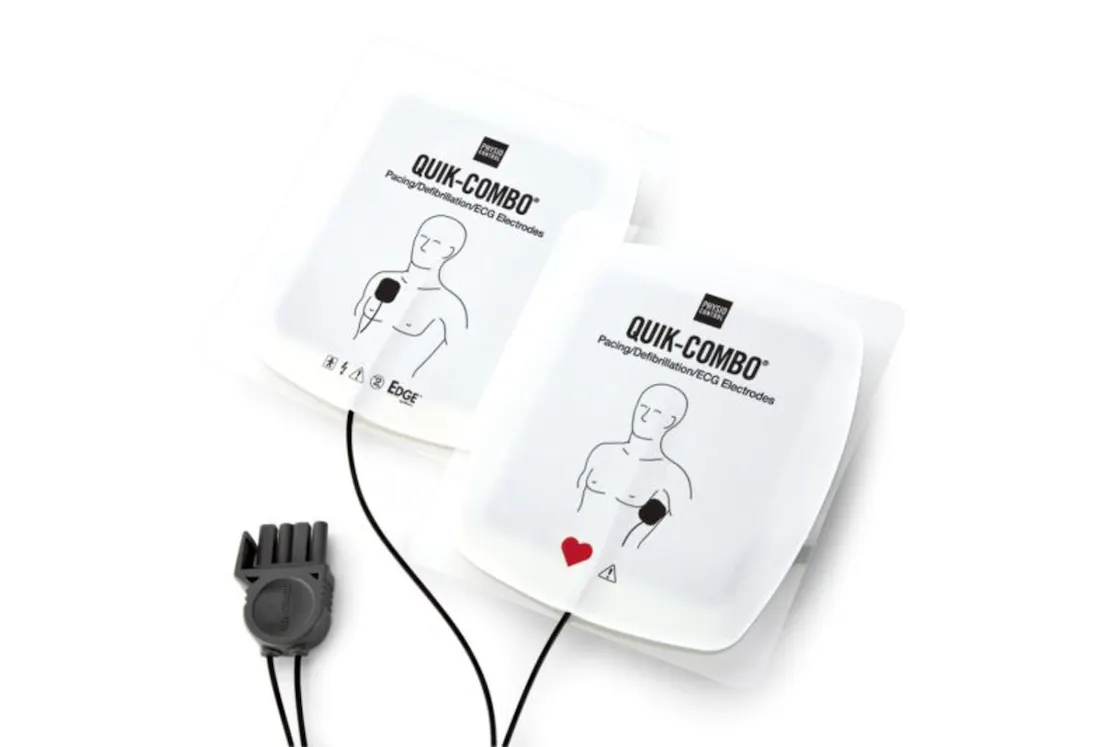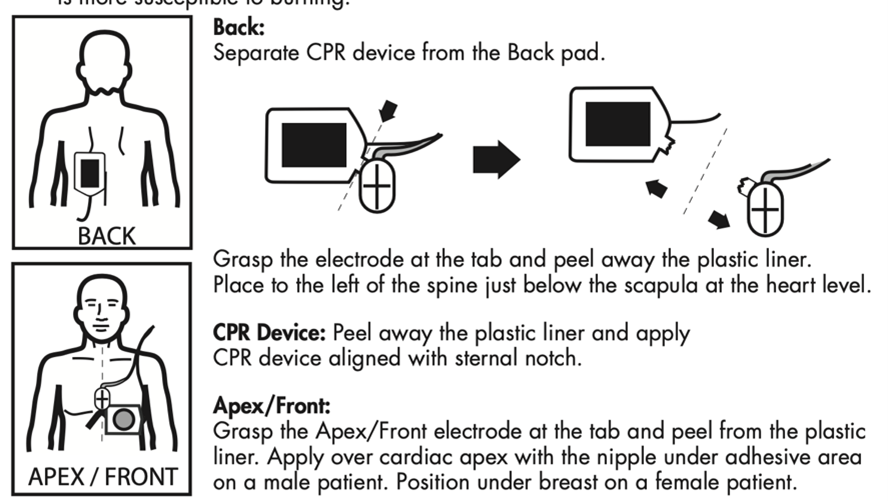Defib Pad Placement
Question# 749
Answer:
When it comes to the pad placement, ultimately, we need to follow the manufacturer’s guidelines.
Careful pad placement allows for the most direct and unobstructed path of transthoracic current (TTC). Improper pad placement and the presence of a variety of substances can create resistance to current flow, also called transthoracic impedance (TTI).
In general, the American Heart Association (AHA) recommends two basic ways to position pads when treating adult patient: anterior-lateral and anterior-posterior.1
When pads are placed anterior-laterally, or front-side, one electrode is placed on the victim’s upper right torso above the right nipple, just below the clavicle, and the other (lateral) pad should align with the bottom portion of the pectoral muscle on a male patient or under the breast on a female patient.
With respect to the LP15 QUICK-COMBO pads:
One pad is labeled with a red heart. This pad should be placed lateral to the patient’s left nipple in the midaxillary line, with the centre of the electrode in the midaxillary line. The other pad should be on the patient’s right torso, lateral to the sternum, and below the clavicle. The photos highlight the ideal placement; based on the manufacturer’s recommendation.


With respect to the Zoll CPR Stat-Padz :
In the A/L configuration, Zoll recommends you place one electrode to the right of the patient’s sternum (patient’s right), just below the clavicle. Place the other electrode just below and to the left of the patient’s left nipple, along the anterior-axillary line.
In the A/P configuration, place the posterior pad to the left of the spine just below the scapula at the heart level. Place the front pad over the cardiac apex between the midline of the chest and nipple on a male victim or under the breast on a female. The attached photos illustrate this.


The Zoll CPR Stat-Padz also have colours to ease placement. The correct way is Red-posterior (“Red to the bed”, or “red to the rear”) and Purple-Anterior. While these are biphasic pads, it does matter where they are placed.
The purple pad is the positive lead, and thus we want that lead to be as close to the heart as possible, with as little impedance as possible. This in turn can maximize the chances of successful defibrillation/cardioversion, and in the case of pacing, helps to achieve capture at lower energy levels, better patient comfort, and less need for pain meds.

References
Published
ALSPCS Version
Views
Please reference the MOST RECENT ALS PCS for updates and changes to these directives.
